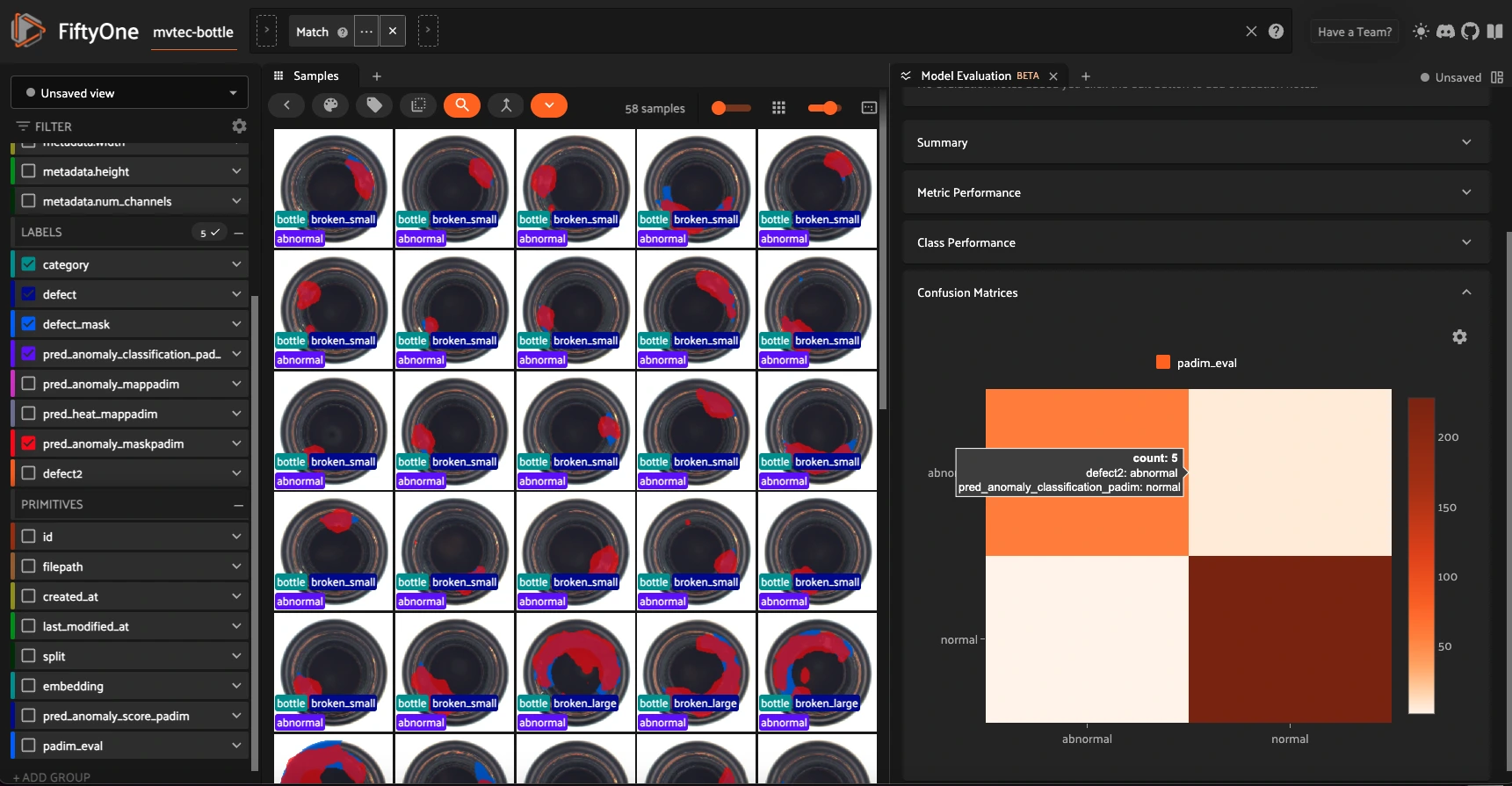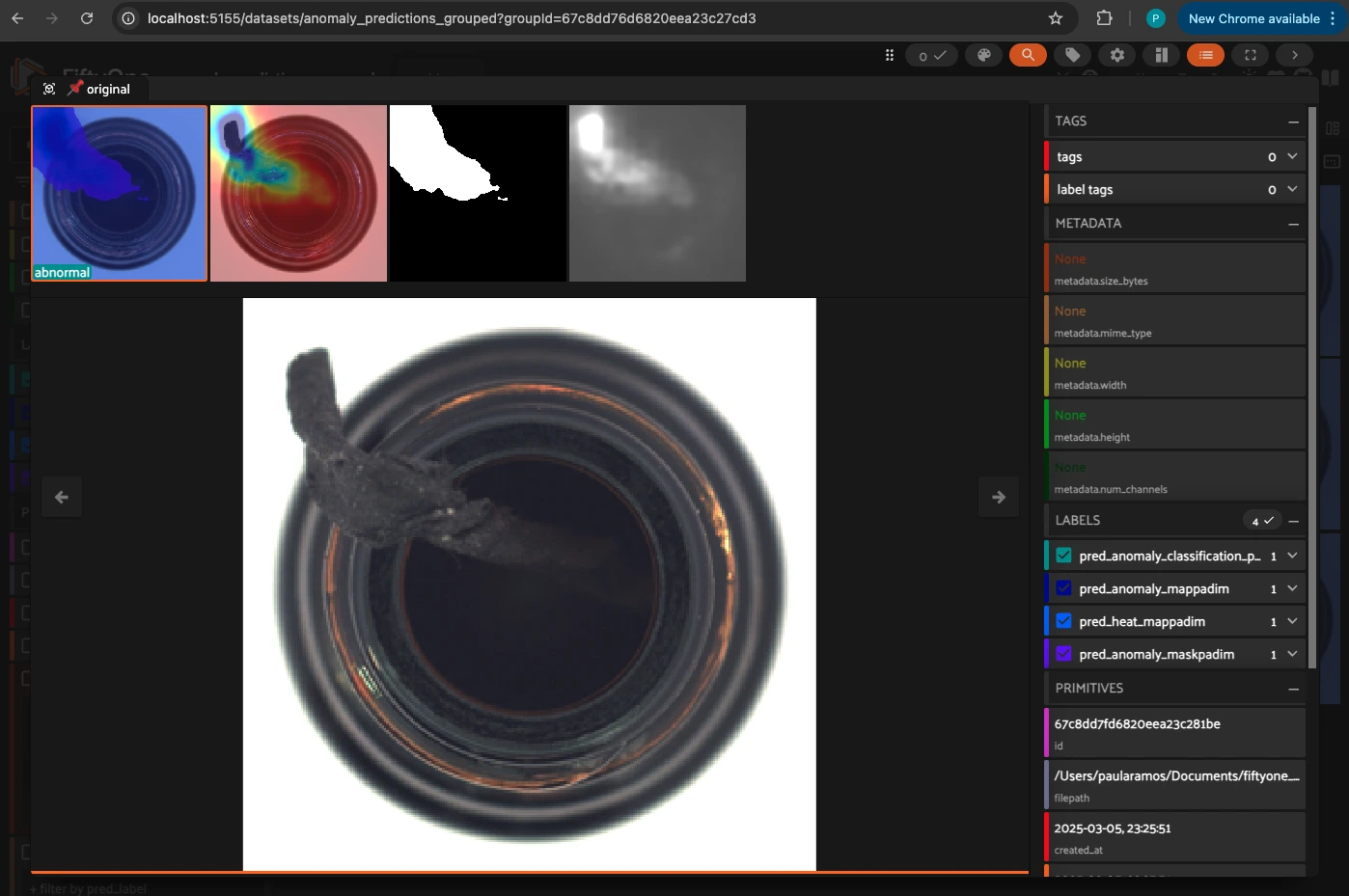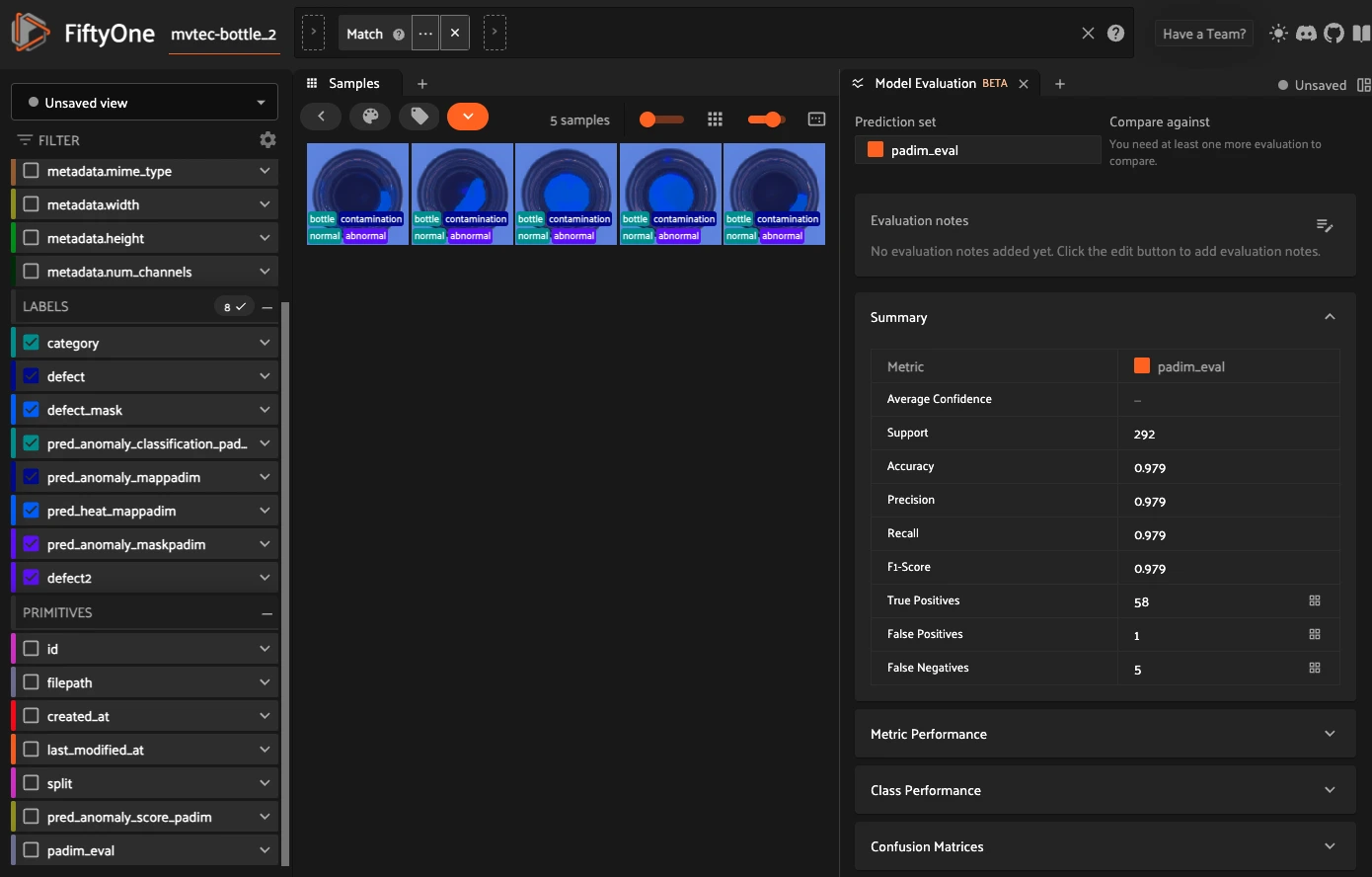 Run in Google Colab Run in Google Colab
|
 View source on GitHub View source on GitHub
|
|
Integrations, Plugins, and Model Evaluation#
In this notebook, we will explore FiftyOne’s integration capabilities, plugin system, and model evaluation tools. This is particularly useful when working with external frameworks, custom plugins, and evaluating AI models.

Learning Objectives:#
Understand how FiftyOne integrates with external tools.
Learn about FiftyOne’s plugin system and how to configure it.
Use the voxel51/evaluation plugin to evaluate models.
FiftyOne Integrations and Plugins#
FiftyOne provides a flexible architecture that enables seamless integration with external libraries, models, and cloud services. This is achieved through integrations and plugins that extend FiftyOne’s core functionalities.
Feature |
Description |
|---|---|
Integrations |
Connects FiftyOne with platforms like PyTorch, Ultralytics, CVAT, Lightning Flash, and Albumentations. |
Enables easy dataset ingestion from sources like Hugging Face and Benchmark datasets |
|
Plugins |
Allow users to extend FiftyOne’s functionality. |
Can be used for custom dataset visualizations, model evaluations, and interactive tools. |
🔗 Relevant Documentation:
[ ]:
!pip install fiftyone huggingface_hub gdown umap-learn torch torchvision scikit-learn python-dotenv anomalib open-clip-torch
Load the MVTec Dataset as usual#
[ ]:
import torch
def get_device():
"""Get the appropriate device for model inference."""
if torch.cuda.is_available():
return "cuda"
elif hasattr(torch.backends, "mps") and torch.backends.mps.is_available():
return "mps"
return "cpu"
DEVICE = get_device()
print(f"Using device: {DEVICE}")
Download dataset from source#
We can download the file from Google Drive using gdown
Let’s get started by importing the FiftyOne library, and the utils we need for a COCO format dataset, depending of the dataset format you should change that option. Supported Formats
[ ]:
import gdown
url = "https://drive.google.com/uc?id=13v04fVX_rNdWR9Gvyc9zZfuWIR0B1XWl" # model-example
gdown.download(url, output="model.ckpt", quiet=False)
!unzip mvtec_ad.zip
import fiftyone as fo
dataset_name = "MVTec_AD_EVAL"
# Check if the dataset exists
if dataset_name in fo.list_datasets():
print(f"Dataset '{dataset_name}' exists. Loading...")
dataset = fo.load_dataset(dataset_name)
else:
print(f"Dataset '{dataset_name}' does not exist. Creating a new one...")
dataset_ = fo.Dataset.from_dir(
dataset_dir="/content/mvtec-ad",
dataset_type=fo.types.FiftyOneDataset
)
dataset = dataset_.clone("MVTec_AD")
Set up the dataset into Anomalib (custom folder) and train the model#
I want to clarify that Anomalib natively supports MVTec and you can use Datamodule callback for using MVTec AD dataset. However for the education purposes of this workshop we will manage MVTec Bottle subset as a custom folder in Anomalib. Selecting OBJECT=bottle in the next cell and adding normal and abnormal folders to the tree directory.
Configuring Plugins in FiftyOne#
To use plugins in FiftyOne, we need to enable and configure them properly.
Minimum Configuration Steps:#
Ensure FiftyOne is installed and up to date.
Download plugind using
fiftyoneCLI.
[ ]:
!fiftyone plugins download https://github.com/voxel51/fiftyone-plugins --plugin-names @voxel51/evaluation
[ ]:
!pip install ipywidgets anywidget
Set up the dataset into Anomalib (custom folder) and train the model#
I want to clarify that Anomalib natively supports MVTec and you can use Datamodule callback for using MVTec AD dataset. However for the education purposes of this workshop we will manage MVTec Bottle subset as a custom folder in Anomalib. Selecting OBJECT=bottle in the next cell and adding normal and abnormal folders to the tree directory.
[ ]:
# import os
# from anomalib import TaskType
# from pathlib import Path
# from torchvision.transforms.v2 import Resize
# import fiftyone as fo # base library and app
# import fiftyone.utils.huggingface as fouh # Hugging Face integration
# from fiftyone import ViewField as F # helper for defining views
# from anomalib.data import Folder
# dataset = fouh.load_from_hub("Voxel51/mvtec-ad", persistent=True, overwrite=True)
# #dataset = fo.load_dataset("Voxel51/mvtec-ad") # Use this CLI if you already have the dataset
# # in your disk or if this is not the first time you run this notebook
# # Try this for already loaded dataset
# # dataset = fo.load_dataset('mvtec-ad-staging')
# OBJECTS_LIST = [
# 'pill',
# 'zipper',
# 'tile',
# 'bottle',
# 'transistor',
# 'wood',
# 'cable',
# 'capsule',
# 'carpet',
# 'grid',
# 'hazelnut',
# 'leather',
# 'metal_nut',
# 'screw',
# 'toothbrush'
# ]
# OBJECT = "bottle" ## object to train on
# ROOT_DIR = Path("/tmp/mvtec_ad") ## root directory to store data for anomalib
# TASK = TaskType.SEGMENTATION ## task type for the model
# IMAGE_SIZE = (256, 256) ## preprocess image size for uniformity
# # training and inference:
# # step-1 create data loader
# def create_datamodule(object_type, transform=None):
# ## Build transform
# if transform is None:
# transform = Resize(IMAGE_SIZE, antialias=True)
# normal_data = dataset.match(F("category.label") == object_type).match(
# F("split") == "train"
# )
# abnormal_data = (
# dataset.match(F("category.label") == object_type)
# .match(F("split") == "test")
# .match(F("defect.label") != "good")
# )
# normal_dir = ROOT_DIR / object_type / "normal"
# abnormal_dir = ROOT_DIR / object_type / "abnormal"
# mask_dir = ROOT_DIR / object_type / "mask"
# # create directories if they do not exist
# os.makedirs(normal_dir, exist_ok=True)
# os.makedirs(abnormal_dir, exist_ok=True)
# os.makedirs(mask_dir, exist_ok=True)
# if os.path.exists(str(normal_dir)):
# normal_data.export(
# export_dir=str(normal_dir),
# dataset_type=fo.types.ImageDirectory,
# export_media="symlink",
# )
# for sample in abnormal_data.iter_samples():
# base_filename = sample.filename
# dir_name = os.path.dirname(sample.filepath).split("/")[-1]
# new_filename = f"{dir_name}_{base_filename}"
# if not os.path.exists(str(abnormal_dir / new_filename)):
# os.symlink(sample.filepath, str(abnormal_dir / new_filename))
# if not os.path.exists(str(mask_dir / new_filename)):
# os.symlink(sample.defect_mask.mask_path, str(mask_dir / new_filename))
# datamodule = Folder(
# name=object_type,
# root=ROOT_DIR,
# normal_dir=normal_dir,
# abnormal_dir=abnormal_dir,
# mask_dir=mask_dir,
# )
# datamodule.setup()
# return datamodule
[ ]:
# from anomalib.engine import Engine
# # train and save model to disk
# def train_and_export_model(object_type, model, transform=None):
# engine = Engine()
# datamodule = create_datamodule(object_type, transform=transform)
# engine.train(model=model, datamodule=datamodule)
# return engine
[ ]:
# from anomalib.models import Padim, Patchcore
# # Load and train padim
# model = Padim()
# engine = train_and_export_model(OBJECT, model)
Model Evaluation in FiftyOne for anomaly detection in a bottle factory#
FiftyOne provides a built-in model evaluation system that supports various evaluation types, such as:
Classification Evaluation (Accuracy, Precision, Recall, F1-score)
Object Detection Evaluation (IoU, mAP)
Segmentation Evaluation
We will use the voxel51/evaluation plugin to evaluate our model’s performance.
Steps:#
Load a dataset with ground truth labels and predictions.
Select an evaluation method.
Run the evaluation and analyze the results.
Relevant Documentation: Evaluating Models in FiftyOne
Load the data into FiftyOne#
[ ]:
import fiftyone as fo # base library and app
from fiftyone import ViewField as F # helper for defining views
import fiftyone.utils.huggingface as fouh # Hugging Face integration
# Load the dataset
dataset_ = fouh.load_from_hub("Voxel51/mvtec-ad", persistent=True, overwrite=True)
#dataset = fo.load_dataset("Voxel51/mvtec-ad") # Use this CLI if you already have the dataset
# in your disk or if this is not the first time you run this notebook
# Define the new dataset name
dataset_name = "mvtec-ad_5"
# Check if the dataset exists
if dataset_name in fo.list_datasets():
print(f"Dataset '{dataset_name}' exists. Loading...")
dataset = fo.load_dataset(dataset_name)
else:
print(f"Dataset '{dataset_name}' does not exist. Creating a new one...")
# Clone the dataset with a new name and make it persistent
dataset = dataset_.clone(dataset_name, persistent=True)
# Define the new dataset name for split set
dataset_name_split = "mvtec-bottle_2"
if dataset_name_split in fo.list_datasets():
print(f"Dataset '{dataset_name_split}' exists. Loading...")
dataset = fo.load_dataset(dataset_name_split)
else:
print(f"Dataset '{dataset_name_split}' does not exist. Creating a new one...")
## get the test split of the dataset
test_split = dataset.match(F("category.label") == 'bottle')
# Clone the dataset into a new one called "mvtec_bottle"
dataset = test_split.clone("mvtec-bottle_2", persistent=True)
[ ]:
print(dataset)
[ ]:
print(dataset.last())
Check if there are previous evaluations#
[ ]:
print(dataset.list_evaluations())
#dataset.delete_evaluation('padim_eval')
#if "eval_key" in dataset.get_field_schema():
# dataset.delete_sample_field("eval_key")
#if "padim_eval"in dataset.get_field_schema():
# dataset.delete_sample_field("padim_eval")
Running Inference with Anomalib’s Engine#
This code demonstrates how to set up and run inference using Anomalib’s Engine with a PaDiM model.
[ ]:
from anomalib.engine import Engine
from anomalib.models import Padim
#Set up my model with Anomalib
engine = Engine(accelerator="cpu")
model = Padim()
# Specify the path to your trained model checkpoint
ckpt_path_model = "/path/to/your/model.ckpt"
# Specify the path to the image you want to run inference on
image_path = "/path/to/your/image.png"
# Run inference on the specified image
predictions = engine.predict(model=model, data_path=image_path, ckpt_path=ckpt_path_model)
Visualizing Anomaly Predictions in Anomalib#
This code processes and visualizes the anomaly detection results from Anomalib. It extracts prediction details, displays anomaly maps, and overlays them on the input image.
[ ]:
import numpy as np
from PIL import Image
from matplotlib import pyplot as plt
from anomalib.utils.post_processing import superimpose_anomaly_map
# Extract the first prediction result
prediction = predictions[0]
# Print key prediction details
print(
f"Image Shape: {prediction.image.shape},\n"
f"Anomaly Map Shape: {prediction.anomaly_map.shape}, \n"
f"Prediction Score: {prediction.pred_score}, \n"
f"Predicted Mask Shape: {prediction.pred_mask.shape}",
)
# Extract anomaly score and label
pred_score = prediction.pred_score[0]
pred_labels = prediction.pred_label[0]
print(pred_score, pred_labels)
# Load and resize the input image
image_path = prediction.image_path[0]
image_size = prediction.image.shape[-2:]
image = np.array(Image.open(image_path).resize(image_size))
# Extract the predicted anomaly mask
pred_masks = prediction.pred_mask[0].squeeze().cpu().numpy()
plt.imshow(pred_masks)
plt.title("Predicted Anomaly Mask")
# Extract and display the anomaly map
pred_anomaly_map = prediction.anomaly_map[0].squeeze().cpu().numpy()
plt.imshow(pred_anomaly_map)
plt.title("Anomaly Map")
# Superimpose anomaly map on the input image for visualization
heat_map = superimpose_anomaly_map(anomaly_map=pred_anomaly_map, image=image, normalize=True)
plt.imshow(heat_map)
plt.title("Superimposed Anomaly Map")
score_value = prediction.pred_score[0, 0].item()
print(score_value)
Running Anomaly Detection Inference and Grouping Results in FiftyOne#
This function, run_inference, performs anomaly detection on a collection of images using a pre-trained model in Anomalib. The results, including anomaly scores, masks, and heatmaps, are stored in FiftyOne’s grouped dataset format for better visualization and analysis.
[ ]:
import os
import cv2
def run_inference(sample_collection, key, engine, threshold=0.5, ckpt_path=None):
# (Optional) if your engine requires a model argument, ensure it is defined or passed in.
# For this example, we assume your engine has the model already loaded.
# Directory to save visualization images
output_dir = "temp_predictions"
os.makedirs(output_dir, exist_ok=True)
# Define the new dataset name
gdataset_name = "anomaly_predictions_grouped"
# Check if the dataset exists
if gdataset_name in fo.list_datasets():
print(f"Dataset '{gdataset_name}' exists. Loading...")
grouped_dataset = fo.load_dataset(gdataset_name)
return grouped_dataset
else:
print(f"Dataset '{gdataset_name}' does not exist. Creating a new one...")
# Create a new grouped dataset
grouped_dataset = fo.Dataset(gdataset_name, overwrite=True, persistent=True)
grouped_dataset.add_group_field("group", default="original")
grouped_samples = [] # Will hold all slices (samples) of all groups
# Iterate over samples in the input collection
for sample in sample_collection.iter_samples(autosave=True, progress=True):
# Run inference on the sample's filepath
predictions = engine.predict(model=engine.model, data_path=sample.filepath, ckpt_path=ckpt_path)
prediction = predictions[0]
# --- Process Prediction Outputs ---
# Extract the prediction score and label
conf = prediction.pred_score[0, 0].item()
anomaly = "normal" if conf < threshold else "abnormal"
# Load original image using the prediction's image path and resize to expected dimensions
image_path = prediction.image_path[0]
image_size = prediction.image.shape[-2:]
image = np.array(Image.open(image_path).resize(image_size))
# Convert predicted mask and anomaly map to NumPy arrays
pred_masks = prediction.pred_mask[0].squeeze().cpu().numpy()
pred_anomaly_map = prediction.anomaly_map[0].squeeze().cpu().numpy()
# Generate heat map overlay using the provided utility
heat_map = superimpose_anomaly_map(anomaly_map=pred_anomaly_map, image=image, normalize=True)
# --- Save Metadata on the Original Sample ---
sample[f"pred_anomaly_score_{key}"] = conf
sample[f"pred_anomaly_classification_{key}"] = fo.Classification(label=anomaly)
sample[f"pred_anomaly_map{key}"] = fo.Heatmap(map=pred_anomaly_map)
sample[f"pred_heat_map{key}"] = fo.Heatmap(map=heat_map)
sample[f"pred_anomaly_mask{key}"] = fo.Segmentation(mask=pred_masks)
sample.save()
# --- Create a Group for This Prediction ---
# Use the sample's unique id to build a group id
group = fo.Group()
group_id = f"sample_{sample.id}"
# ----- Original Image Slice -----
# Ensure image is in uint8 (if not already)
orig = image.copy()
if orig.dtype != np.uint8:
orig = (orig * 255).astype(np.uint8)
orig_path = os.path.join(output_dir, f"{group_id}_original.png")
# OpenCV expects BGR, so convert RGB to BGR
cv2.imwrite(orig_path, cv2.cvtColor(orig, cv2.COLOR_RGB2BGR))
sample_orig = fo.Sample(filepath=orig_path, group=group.element("original"))
sample_orig["pred_score"] = conf
sample_orig["pred_label"] = anomaly
# --- Save Metadata on the Original Sample ---
sample_orig[f"pred_anomaly_score_{key}"] = conf
sample_orig[f"pred_anomaly_classification_{key}"] = fo.Classification(label=anomaly)
sample_orig[f"pred_anomaly_map{key}"] = fo.Heatmap(map=pred_anomaly_map)
sample_orig[f"pred_heat_map{key}"] = fo.Heatmap(map=heat_map)
sample_orig[f"pred_anomaly_mask{key}"] = fo.Segmentation(mask=pred_masks)
sample.save()
# ----- Heat Map Slice -----
heat = heat_map.copy()
if heat.dtype != np.uint8:
heat = (heat * 255).astype(np.uint8)
heat_path = os.path.join(output_dir, f"{group_id}_heat.png")
cv2.imwrite(heat_path, heat)
sample_heat = fo.Sample(filepath=heat_path, group=group.element("heat_map"))
# ----- Predicted Mask Slice -----
mask = pred_masks.copy()
if mask.dtype != np.uint8:
mask = (mask * 255).astype(np.uint8)
mask_path = os.path.join(output_dir, f"{group_id}_mask.png")
cv2.imwrite(mask_path, mask)
sample_mask = fo.Sample(filepath=mask_path, group=group.element("pred_mask"))
# ----- Anomaly Map Slice -----
anom = pred_anomaly_map.copy()
if anom.dtype != np.uint8:
anom = (anom * 255).astype(np.uint8)
anom_path = os.path.join(output_dir, f"{group_id}_anomaly.png")
cv2.imwrite(anom_path, anom)
sample_anom = fo.Sample(filepath=anom_path, group=group.element("anomaly_map"))
# Add all four slices for this prediction to the list
grouped_samples.extend([sample_orig, sample_heat, sample_mask, sample_anom])
# Add all grouped samples to the grouped dataset
grouped_dataset.add_samples(grouped_samples)
# Optionally launch the FiftyOne App to inspect the grouped dataset
return grouped_dataset
Function Overview#
def run_inference(sample_collection, key, engine, threshold=0.5, ckpt_path=None):
sample_collection: The input FiftyOne dataset containing images for inference.
key: Identifier for Anomalib model.
engine: The inference engine (e.g., Anomalib’s Engine) with the model loaded.
threshold: Score threshold for classifying images as “normal” or “abnormal”.
ckpt_path: Path to the trained model’s checkpoint.
[ ]:
grouped_dataset = run_inference(dataset, "padim", engine, threshold=0.5, ckpt_path=ckpt_path_model)
Reloading and Visualizing the Grouped Dataset in FiftyOne#
After running inference, we reload the grouped dataset to ensure all predictions are updated and then visualize the results in the FiftyOne App.
[ ]:
grouped_dataset.reload()
print(grouped_dataset.last())
session = fo.launch_app(grouped_dataset, port=5155, auto=False)
print(session.url)

Evaluating Anomaly Classification with the Model Evaluation Plugin in FiftyOne#
When using the Model Evaluation Plugin in FiftyOne, we can evaluate model predictions using either:
The Model Evaluation Panel in the FiftyOne App – Interactive UI-based evaluation.
The FiftyOne SDK – Programmatic evaluation via Python scripts.
Which one to use?
If you prefer an interactive visual analysis, the FiftyOne App provides an intuitive panel for evaluating models.
If you need automated and reproducible results, the FiftyOne SDK allows for batch evaluation and detailed reporting.
[ ]:
import numpy as np
for sample in dataset.iter_samples(progress=True):
# If the sample already has "defect2", skip it
# if "defect" in sample and sample["defect2"] is not None:
# continue
# Otherwise, create "defect2"
if sample["defect"].label == "good":
sample["defect_mask"] = fo.Segmentation(
mask=np.zeros_like(sample["pred_anomaly_maskpadim"].mask)
)
sample["defect2"] = fo.Classification(label="normal")
else:
sample["defect2"] = fo.Classification(label="abnormal")
sample.save()
eval_key = "padim_eval"
# Now evaluate on the "defect2" field
eval_classif_padim = dataset.evaluate_classifications(
"pred_anomaly_classification_padim",
gt_field="defect2",
method="binary", #method is important to see data in the FO app
classes=["normal", "abnormal"],
eval_key=eval_key, # <--- store this run under "padim_eval"
)
eval_classif_padim.print_report()
[ ]:
print(dataset)
print(dataset.last())
[ ]:
# Plot a confusion matrix
plot = eval_classif_padim.plot_confusion_matrix(backend="matplotlib")
plot.show()
[ ]:
# Plot a PR curve
plot = eval_classif_padim.plot_pr_curve(backend="matplotlib")
plot.show()
Visualizing Evaluation Results#
After running the evaluation, we can inspect the results using the FiftyOne App:
In the App, you can:
Filter samples by correct or incorrect predictions. View IoU scores, confusion matrices, and detection overlaps. Generate customized evaluation reports.
Relevant Documentation: Interactive Model Evaluation in FiftyOne
[ ]:
session = fo.launch_app(dataset, port=5155, auto=False)
print(session.url)

Next Steps:#
Try using other plugins or create your own to extend FiftyOne’s capabilities! 🚀